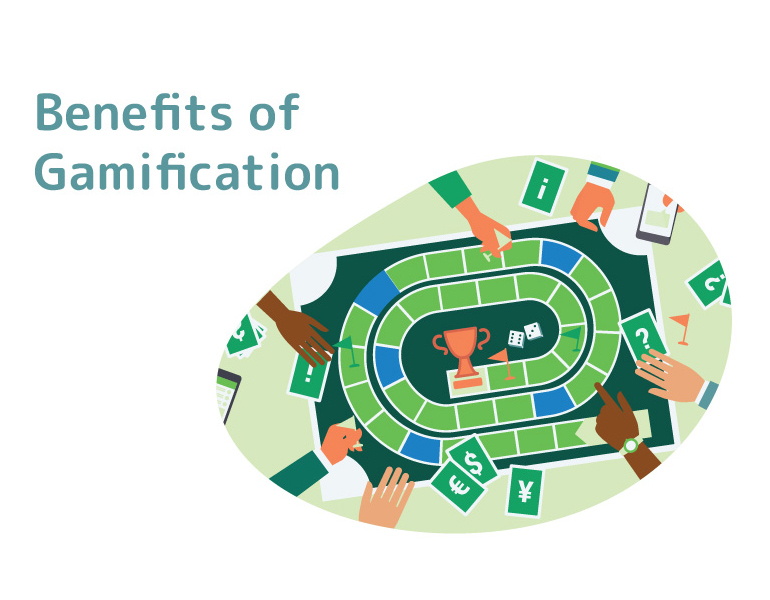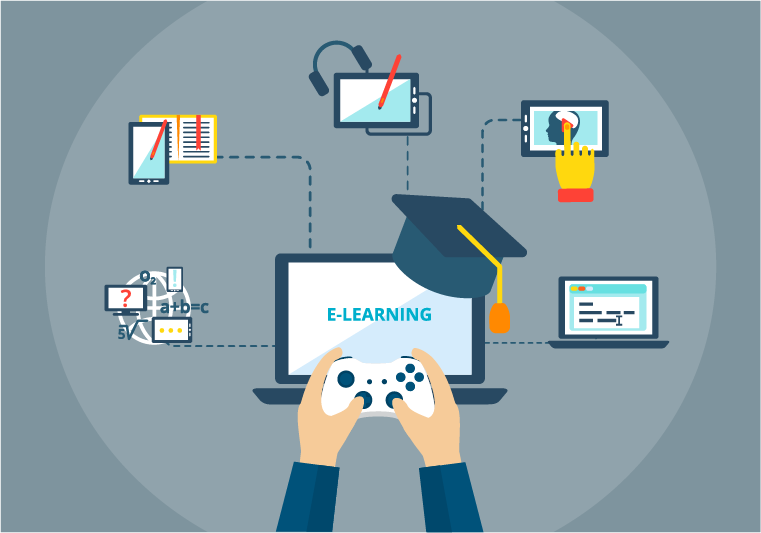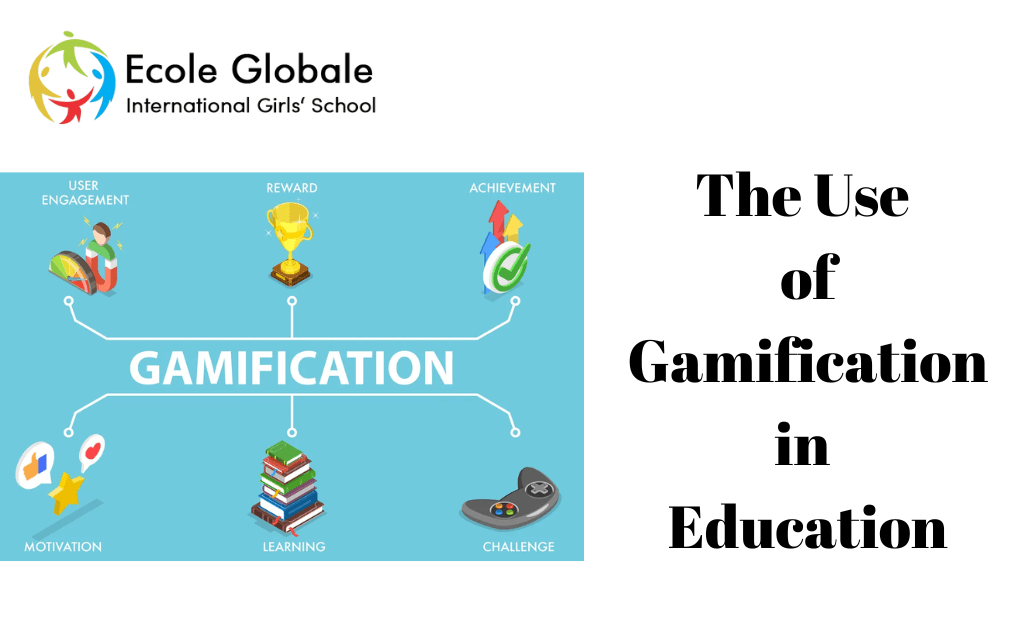Gamification is a process that involves the use of game design elements in non-game contexts. As per research conducted by Top Boarding Schools in India, The goal of gamification is to motivate people to perform a task by making it into a game, either for their enjoyment or for external rewards. Gamification in education can be used as a tool to help solve problems, engage people, and make learning more fun.
Gamification in education is the use of game design elements in non-game contexts. It can be used to improve user engagement and learning, and to make a process more fun and engaging for the user. Gamification has been applied in a wide range of fields ranging from online marketing to healthcare, education, public transportation, and even the military. Gamification in education can be implemented in any situation where there is an attempt to engage people in solving problems or achieving goals.
Importance of Using Gamification in Education

The use of gamification in education has been growing over the last few years. Gamification has been used as a way to increase student engagement, improve learning outcomes and encourage students to pursue their interests outside of the classroom. The use of gamification aims to harness the inherent motivational power of games by applying game design principles and mechanics (such as points, badges, or levels) outside of games into real-world settings such as classrooms or workplaces.
Applications of Gamification in Education
Gamification of learning activities and assessments
Gamification in education can be used as a tool to create engaging educational experiences for students, teachers, and parents through multiple platforms such as mobile devices and social networks. It can be used as a tool for teachers to engage students in the classroom while they are learning new concepts or skills. It can also be used as a reward system for students who complete their assignments on time or reach certain benchmarks.
Gamification of classroom management and student behavior
Another survey done by Best International Schools in India shows that One of the most important things that teachers need to do is to manage the class effectively. They may have a group of students who are not paying attention or are misbehaving, but at the same time, they also have other groups who are doing very well. These types of situations can be handled using gamification in education as it allows teachers to reward students who are behaving well while giving them a chance to discipline students who are behaving poorly. This type of system gives an incentive for students who have good behavior while discouraging those with bad behavior.
Gamification of teacher professional development
Teacher professional development is an important aspect of improving education at all levels, but it can often be difficult to find time for it. Teachers are often busy teaching their classes or planning new lessons and don’t have time to take courses or read books about pedagogy or teaching techniques. Gamification offers a way for teachers to learn new techniques while having fun and competing against other teachers across the country.
Benefits of gamification in education

Increased student engagement and motivation
The most common use of gamification in education is to motivate students to learn by making the learning experience more engaging and interactive. It is also used by teachers to encourage students’ effort and participation in class activities such as class discussions and group work.
One of the most important factors when using gamification in education is how effective it will be for each student because every student has different needs, interests, and abilities. Therefore, teachers should try different kinds of games before deciding which games are best suited for their classes.
Improved learning outcomes and retention
Gamification helps students learn more effectively by making them more engaged in learning. It often results in improved grades for students exposed to gamification techniques compared to others. The addition of rewards also encourages students to stay interested in their studies for a long. It increases overall productivity levels for teachers and students alike.
Development of problem-solving and critical-thinking skills
Another benefit of gamification in education is that it helps develop problem-solving skills among students by encouraging them to think critically about the problems they face so that they can find solutions for them on their own instead of relying on others or asking for help from others every time they get stuck at a particular point in their project or assignment or exam paper.
Enhanced collaboration and teamwork
Games are often played with others, so students who participate in gamified lessons also interact with their peers in positive ways. It can help improve relationships between students and between teachers and students as well.
Challenges of implementing gamification in education

Limited access to technology and resources
Schools do not have enough hardware or software resources needed for implementing gamification programs in schools due to budget constraints. It makes it difficult for teachers to come up with creative ways of using gamification techniques in their classrooms as well as train their students on how to use these tools effectively for educational purposes only.
Another issue is technical difficulties and maintenance of the software involved in making the game or application. There are many different types of software available for creating games and apps. But they all have limitations, which can make them unsuitable for certain projects.
Concerns about over-reliance on games for learning
While some students respond well to them, others don’t respond at all or even have negative reactions.
Future of gamification in education

Emerging trends in gamification technology
The use of gamification in education has been around for years. But recently, there have been some exciting developments that could change the way we learn forever.
Here are some of the latest trends in gamification technology:
Virtual Reality (VR)– VR is already being used by many different industries including- healthcare and real estate. VR can be an incredible tool for teaching students about subjects like geography or biology because they can immerse themselves inside a virtual world where they can interact with their environment and learn hands-on.
Adding augmented reality (AR) features into games or assignments- While VR is designed primarily for entertainment purposes, AR allows students to interact with real-world objects while they’re learning new concepts or doing assignments.
The implementation of chatbots to help students with their homework and provide personalized feedback
Another trend in gamification involves using technology to allow students to compete against each other for achievement awards or badges that signify their accomplishments within the course materials. This type of competition helps keep students engaged with the material by giving them something extra on top of what they get out of regular classwork – especially when these games have an element of risk involved.
Potential benefits and challenges of future gamification
Gamification is a relatively new concept that has emerged from the convergence of technological advances and social media. The idea is to use the techniques used in games to motivate non-gamers in your classroom or workplace.
The potential benefits such as improving students’ self-esteem and confidence, increasing their motivation, and helping them become more independent learners are undeniable. However, there are also some challenges we need to address before this becomes a reality.
Conclusion
A gamified education system is a learning environment that combines traditional education with game elements. The goal of using gamification in education is to help students learn better and faster. Gamification can engage learners, motivate them, and encourage them to take action.
It’s important to note that there are no specific rules when it comes to creating games using gamification techniques—the key is understanding what makes people want to play games in the first place and then finding ways of replicating those emotions in real-life situations (whether it’s learning maths facts or completing an online course).
For any queries related to parenting, schooling, or any student-related tips, click here to check out our latest blogs.






